Written by
Sherry SongSummary: This post tells you how to format an SD card to FAT32 on Mac with Disk Utility, SD Card Formatter, and Terminal in detail. It also explains why you can't format an SD card on Mac.
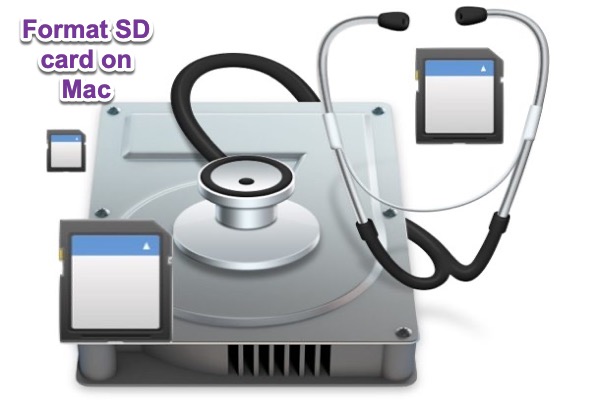
Sometimes you need to format an SD card to serve some purposes like clearing the SD card on your Mac for lending it or fixing issues due to one of the cases below:
- The SD card is inaccessible or unreadable.
- The SD card is corrupted and you can't use it.
- You need to prepare the SD card to be used for the first time.
- You need to make the SD card ready for another operating system
- You want to clear an SD card for more available space.
Whatever the reason is, let's get to the details of how to format an SD card on a Mac, like a MacBook Pro and other Mac models.
Quick steps to format an SD card on Mac
If you are in a hurry, here is a quick summary of how to format an SD card on a Mac for a camera and other devices:
- Step 1: Insert the SD card into your Mac.
- Step 2: Open Disk Utility, the Mac version of Windows Disk Management.
- Step 3: Select your card and click Erase.
- Step 4: Input a new name, and choose MS-DOS (FAT)/FAT32 for a card size of 32GB or less; otherwise, choose ExFAT.
- Step 5: Leave the Scheme as it is.
- Step 6: Click Erase.
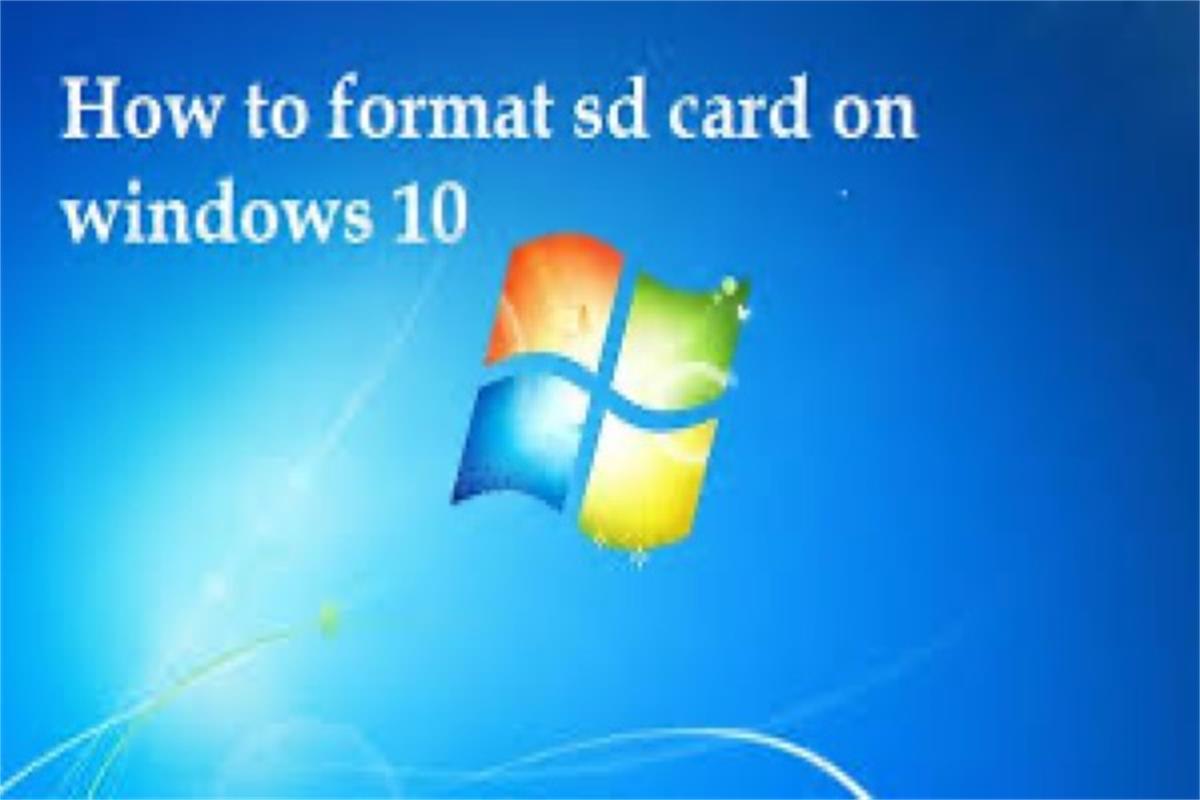
How to format an SD card on Windows?
If have a PC and need to format the SD card for your Android devices, phones, or cameras, you can follow this guide to format SD cards on Windows 10. Read more >>
Should you format SD card to FAT32 on Mac?
Before getting to the details about formatting SD cards to FAT32 on Mac, let's discuss whether FAT32 is the best file system you should choose.
Since SD or micro SD cards are mainly used for portable devices, FAT32 and ExFAT are the top choices due to their excellent compatibility across platforms.
ExFAT is more advanced than FAT32 with speed improvement at reading and writing data to a drive. But FAT32 is more compatible than ExFAT, especially for some old devices such as Microsoft's Xbox 360 and PlayStation 3.
As a rule of thumb, unless you are formatting an SD card for a device that only accepts FAT32, regardless of intending to format the SD card on Mac for camera or the like, you should follow this:
If your SD card is 32GB or smaller and you don't plan to store any file larger than 4GB, choose MS-DOS (FAT), the Disk Utility version of FAT32. Otherwise, ExFAT is a better option.
If you are familiar with Windows PC, you know that it doesn't let users to format an SD larger than 32GB to FAT32. So you may be concerned about how to format 64GB SD card to FAT32 on Mac.
In fact, Mac allows you to format a 64GB SD card to FAT32 on Mac or one with a larger capacity like 128GB. But you need to be certain that your device can read an SD larger than 32GB with FAT32 first.
Preparation before formatting an SD card to FAT32 on Mac
First, check if your Mac has an SD card slot that you can insert into directly.
If you need to erase a micro SD card, put it into an SD card adapter first. Otherwise, you can prepare a memory card reader that can use your Mac's USB ports. Alternately, you can put the SD card into your camera, turn it on, then connect it to your Mac using a USB cable.
Second, back up data on the SD or micro SD card.
Please note that formatting an SD card means erasing all files on it, which is the best option to reset and clear an SD card. If you can't access the files on the corrupted card, perform an SD card recovery on Mac with iBoysoft Data Recovery for Mac.
Finally, To avoid failure of formatting a write-protected SD card, please ensure that your SD card isn't physically locked.
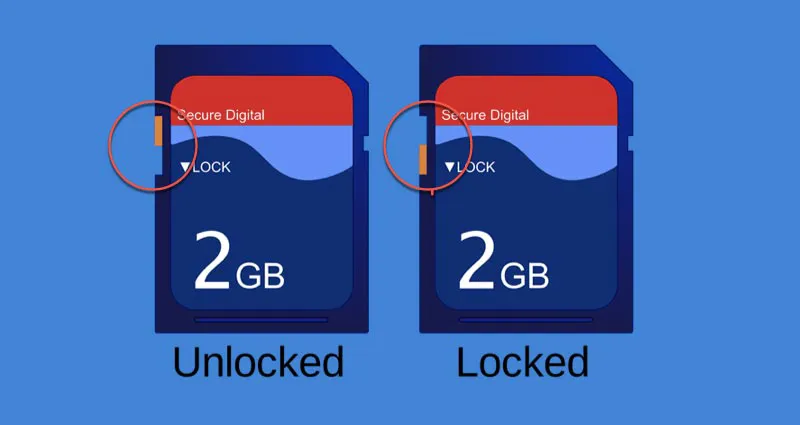
How to format 64GB SD card to FAT 32 on Mac?
Let's look at the three ways to format any SD card or micro SD card on Mac without further ado.
Option 1: Format your SD card to FAT32 on Mac with Disk Utility
The best FAT32 formatter on Mac is the built-in Disk Utility, the counterpart of Windows Disk Management on Mac. It can format all types of storage devices like SD cards and USB flash drives to FAT32, ExFAT, HFS+, etc. Here is how to format SD card to FAT32 on Mac:
1. Open Finder - the macOS version of Windows File Explorer, go to Applications > Utilities folder, then launch Disk Utility.
2. Select the card and click on the Erase button at the top toolbar.
On the left sidebar, you may see your SD card with a partition under it. Choose the main card that may contain the brand name on it and confirm it's the one you want to format by checking its compacity and available space.

3. Assign a name to the card.
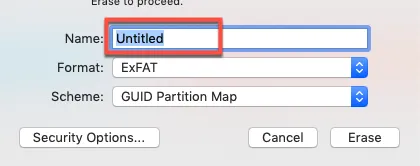
4. Select a file system from the drop-down menu.
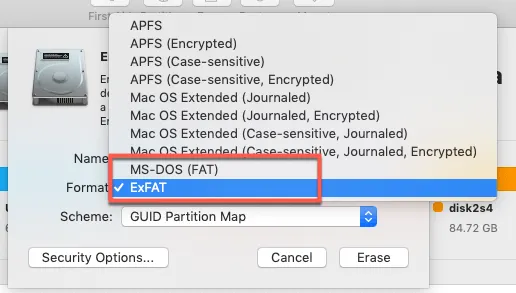
5. Keep the Scheme unchanged.
6. If you want to securely format the SD, click Security Options.
Move the slider to choose how many times to write over the erased data, then click OK.
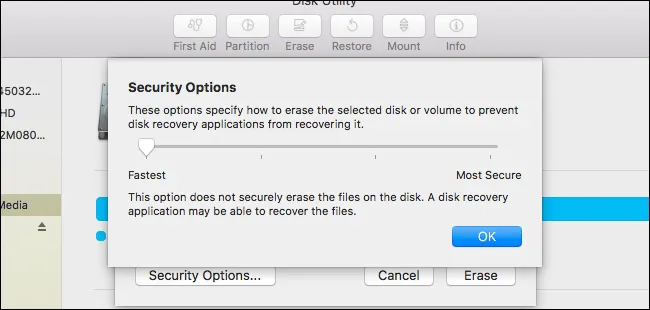
7. Click on the Erase button to format your SD card.

Wait until the formatting process is done. Then you can use the formatted SD card as you like. If Disk Utility cannot format your SD card, try solution 2.
Option 2: Format your SD card to FAT32 on Mac with SD Card Formatter
SD Card Formatter is a friendly alternative to Disk Utility, which is free and easy to use. It may be better for beginners because it automatically detects the inserted SD or micro SD card and selects the proper file system based on its capacity.
Here is how to format an SD card on MacBook Pro with Mac SD Card Formatter:
- Download Mac SD Card Formatter and install it.
- Launch it from LaunchPad > SD Card Formatter.
- Connect the card to your Mac, and then it will appear on the SD Card Formatter window.
- Choose Quick format to free up space on the card. If you want to wipe the old data and prevent it from being recovered, choose Overwrite format instead.
- Under Volume label, give the card a new name, and click Format.
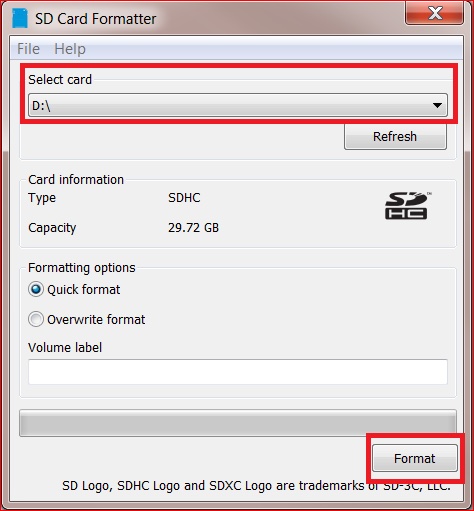
If your SD card is still not working with Mac SD Card Formatter, try to force format the SD or micro SD card with Terminal.
Option 3: Format your SD card to FAT32 on Mac with Terminal
Terminal is generally more recommended for techies because the command-line interface isn't as intuitive as the graphic interface, and beginners may make mistakes. Please read carefully before you act.
Here is how to format an SD card on MacBook Pro with Terminal:
1. Go to Applications > Utilities > Terminal.
2. Enter the following command into Terminal:
diskutil list
3. Note down the specific identifier of your SD. Terminal is now showing you a list of drives connected to your Mac. Based on the information below the Size and Type Name, find the identifier of your SD.

4. Type in the following command into Terminal:
sudo diskutil eraseDisk FAT32 diskname MBRFormat /dev/diskidentifier
For example, if you want to format an SD with the identifier as disk 2 and the new name as RASPBIAN, then the command will be:
sudo diskutil eraseDisk FAT32 RASPBIAN MBRFormat /dev/disk2

5. Press Enter, then input your account password. Terminal will start formatting right away. Wait until it finishes the job.
Still unable to format your SD card on Mac
Despite being careful with all the processes, sometimes you may face other SD card errors and problems caused by:
- unsafe ejection
- virus attack
- read-only status
- incompatible file system
- a corrupted SD card due to bad sectors or file system errors
If you can't format your SD card on Mac using the solutions mentioned above, try to repair the SD with Disk Utility First Aid, then ask the manufacturer for help or visit a repair shop nearby.
Also read:

